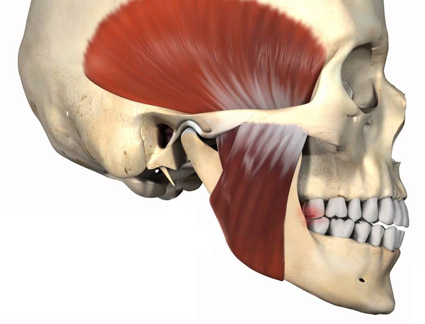Temporomandibular Joint Disorders
In Summary, by definition, temporomandibular joint (TMJ lower jaw joints ) and/or masticatory muscle pain and dysfunction syndrome. Jaw joint disorder, a common part of today is under the influence. The harmony between the disk and the deterioration of the articular surface occur.
What Are The Symptoms Of Disorders Lower Jaw?
- Pain during mouth opening live
- Opening and closing mouth when you grinding, clicking, clicking noise
- Or crash to open during restricted mouth opening
- Pain or stiffness in the neck
- Headache (not to be confused with a migraine)
- Pain felt in the face during mastication
- Pain felt in teeth closing on top of one another
- While chewing jaw fatigue
- Usually in the morning, difficulty in mouth opening and pain live
- Difficulty with live yawn
- Ear pain, ringing in the ears, roar-like sounds, blockage and feeling of pressure
- Sudden change in the form of the merger of the upper and lower teeth
- Facial asymmetry due to hypertrophy in the muscles in the face that could be
- Of the jaw during mouth opening deviation (shift)
What Are The Causes Of Joint Dysfunction In The Lower Jaw?
- Jaw joint or direct trauma to the area (the result of accident or stroke)
- Unilateral chewing habit
Tooth defects
- Teeth clenching and grinding
- Stress, depression, etc.
- Non-physiological closure outer
- The joint of developmental defects( hypoplasia, etc.)
- Degenerative joint diseases, SOD, artrosis
- Autoimmune diseases, rheumatoid arthritis, lupus
- Unknown factors
Inspection Methods
- Examination of the teeth and closing system
- Examination of masticatory muscles
- Examination of the TMJ
Patient education is the most important thing that needs to be done first.
Diagnosis
Some helpful examination along with tests for the diagnosis of TMJ disorders can also be used. Moreover, conventional imaging or Computed Tomography and magnetic resonance imaging methods are also frequently used. Rarely scintigraphy or pet studies may also be required.
Treatment
Of symptoms treatment.
- Treating the underlying cause.
- Elimination of predisposing factors.
- Pathological effects of the treatment.
What Are The Treatment Options?
- Patient education and preventive treatment
- Splint therapy
- Drug therapy
- Exercises
- Physical therapy
- Manipulation
- Psychiatric support
- In late cases, advanced therapies (surgery, etc.)
In The Process Of Treatment
- To reduce the burden on the joints the stress of the patient is essential and must be removed.
- It is forbidden to be eaten hard foods chewing gum and the jaw is tired.
- Mouth yawn and sneeze when extreme swing of the jaw should be supported by hand.
- Biting action definitely should not be done, the food should be taken in the mouth in small pieces.
- Unilateral chewing should be avoided of nutrients must be chewed to be used on both sides.
- In cases there is a lot of pain, to the process of how to contact a doctor; pain relief, Jul relaxant and anti-inflammatory drugs can be applied.
At The End Of The Treatment Process
- Early and pathological tubercle contacts will be corrected.
- Closing is controlled, and if necessary, patients are referred to orthodontics.
- If you are missing teeth, prosthetic treatments and neutral is not resolved through a closing is provided.
- Teeth clenching or grinding continues, psychiatric consultation is requested.
As a result of these complementary therapies, successfully complete the treatment process may be concluded. Primarily the treatment of TMJ dysfunction, including patient compliance, will require a multidisciplinary approach. This treatment is applied in conjunction with a TMJ specialist, physical therapist, psychiatrist, neurologist may require consultation.

- Therapeutic Applications
Tedavi Uygulamalari
- ❯ What Is An Implant ? Implant
- ❯ Oral and Maxillofacial Diseases (surgical) Cerrahi Mudehaleler
- ❯ Laser Treatment Lazer Tedavisi
- ❯ Conservative Dentistry (Dental Fillings) Konservatif Dis Hekimligi (Dis Dolgulari)
- ❯ Endodontics (Root Canal Treatment) Endodonti(Kanal Tedavisi)
- ❯ Pedodontics (Childrens Teeth) Pedodonti (Çocuk Disleri)
- ❯ Periodontics (Gum Treatment) Periodontoloji (Dis Eti Tedavisi)
- ❯ Orthodontics Ortodonti
- ❯ Teeth Whitening Dis Beyazlatma
- ❯ Treatment of jaw joint disorders Cene ve Eklem Rahatsizliklari Tedavisi
- Corporate Kurumsal
- Health Tourism Saglik Turizmi
- Cases Vakalar
- Our Clinic - Gallery Klinigimiz - Galeri
- CONTACT iletisim
- Therapeutic Applications
Tedavi Uygulamalari
- What Is An Implant ? Implant
- Oral and Maxillofacial Diseases (surgical) Cerrahi Mudehaleler
- ❯ Laser Treatment Lazer Tedavisi
- Conservative Dentistry (Dental Fillings) Konservatif Dis Hekimligi (Dis Dolgulari)
- Endodontics (Root Canal Treatment) Endodonti(Kanal Tedavisi)
- Pedodontics (Childrens Teeth) Pedodonti (Çocuk Disleri)
- Periodontics (Gum Treatment) Periodontoloji (Dis Eti Tedavisi)
- Orthodontics Ortodonti
- Teeth Whitening Dis Beyazlatma
- Treatment of jaw joint disorders Cene ve Eklem Rahatsizliklari Tedavisi
- Corporate Kurumsal
- Health Tourism Saglik Turizmi
- Cases Vakalar
- Our Clinic - Gallery Klinigimiz - Galeri
- CONTACT iletisim

